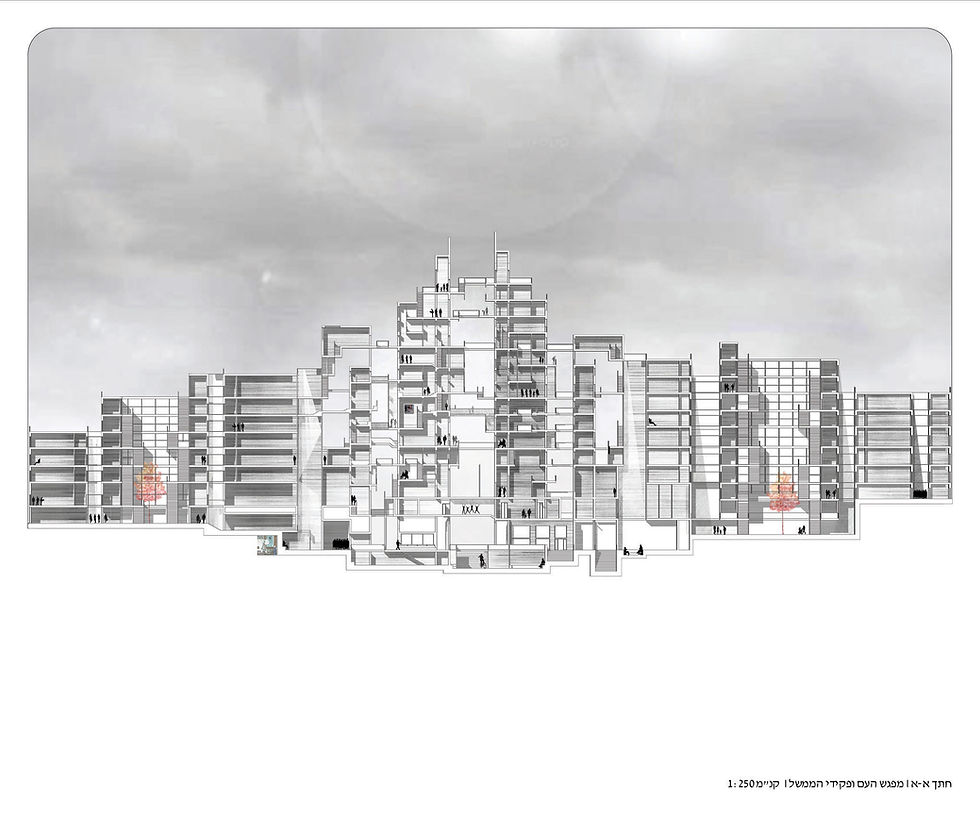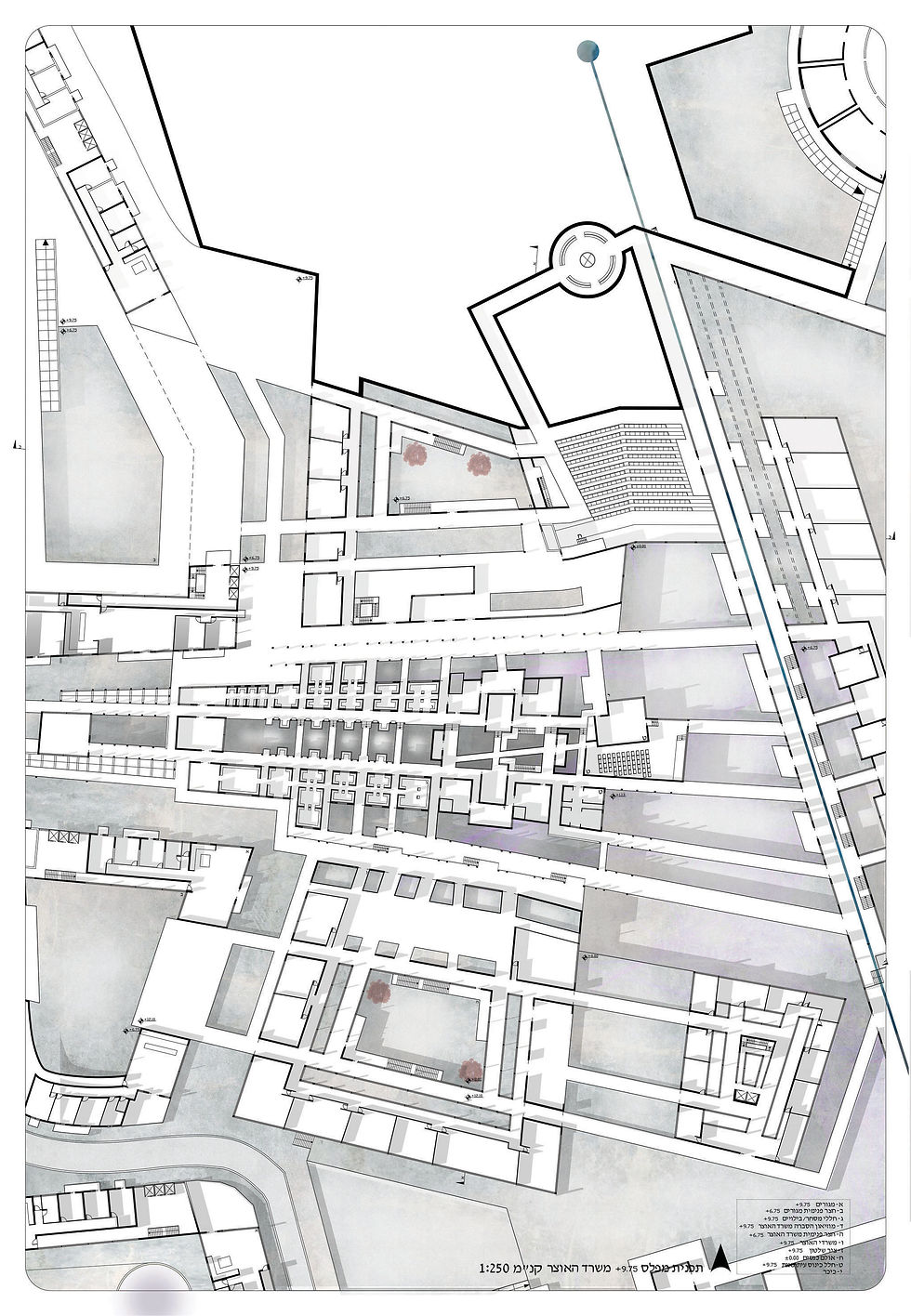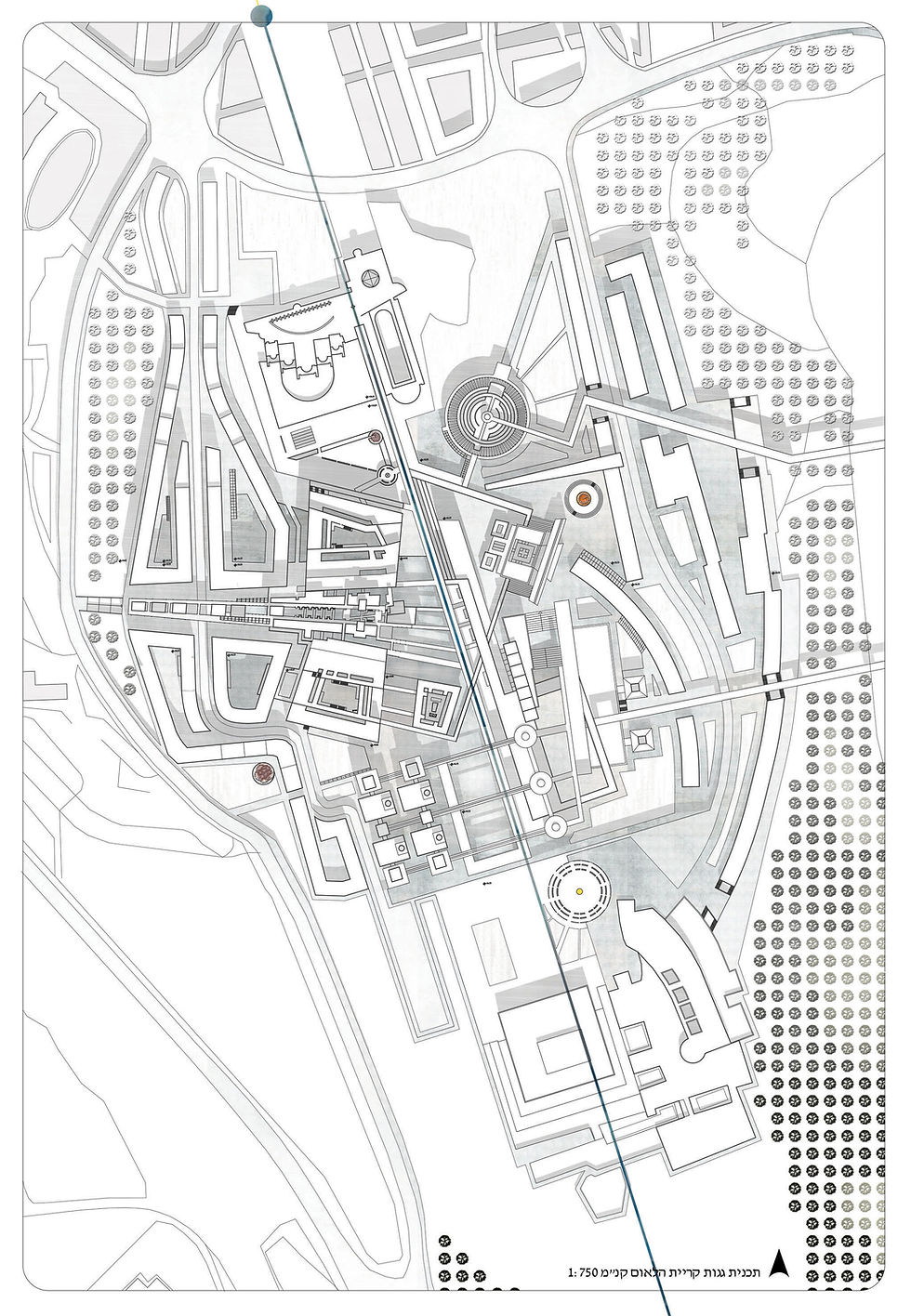The Knesset functions as an independent entity, isolated from the rest of the capital. Its activities are not reflected in its not-very-distinctive appearance. The road leading to the Knesset is lacking urban architecture. The Knesset’s shortcomings and lack of significance in the story of the city are reflected throughout Jerusalem. One would expect the capital to have a dimension that goes beyond itself to present the reigning powers, thus creating the capital’s story. While Jerusalem is the eternal capital in our hearts and minds, it is not so in reality. In my opinion it is necessary to offer a new interpretation of the establishments of the city. I want to dismantle the institutional architecture of Jerusalem and reinterpret it. I would like to offer a new story for Jerusalem, allowing it to be the true capital city of Israel.
In the time of the ancient Jewish Temple, the government was positioned at the city gates, and from this position, responsibility was projected to the rest of the country. As a passerby would progress towards the temple, he would feel the increased responsibility and universality, created by a sense of spiritualism-responsibility for the whole world. I would like to translate this phenomenon to Jerusalem, our eternal capital, which has a national and a universal dimension. Beyond Jerusalem’s locality, it belongs to the whole country. In my project, I'm presenting Jerusalem with a new power axis, whose development begins at the city gates; an axis formed on the road to Jerusalem and extends inwards. The government will be responsible for the whole nation, with branches forming an entryway building the city's gate. The layout of the city will create local responsibility for Jerusalem.
conflict establishes architectural situations
...









